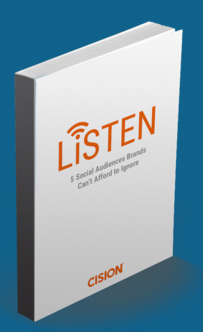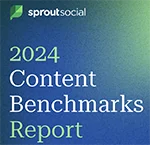 Depending the media outlet, it can be tough to get reporter’s ear. But when you do, the ability to verbally communicate why your pitch is valuable could spell the difference between getting exposure for your client or your company or trudging on to the next possibility.
Depending the media outlet, it can be tough to get reporter’s ear. But when you do, the ability to verbally communicate why your pitch is valuable could spell the difference between getting exposure for your client or your company or trudging on to the next possibility.
Verbal communication, sans industry jargon, remains a key component of PR, of course. Ditto for listening, and hearing what reporters and other stakeholders are saying, rather than angling for an answer that the boss ultimately wants to hear.
As social media quickly moves to the core of marketing communication, “social listening” is becoming paramount to effective PR. But it’s a hard slog, particularly when PR pros are conditioned to driving the conversation. What is more, companies that remain siloed operate at a competitive disadvantage regarding social listening.
“To survive as a business in a social world you can’t live in silos, everyone has to be on the same page,” said Brandon Andersen, director of marketing at Cision. “Those who figure it out and succeed with social listening will leave everybody else in the dust.”
Cision’s new e-book, LiSTEN: 5 Social Audiences Brands Can’t Afford to Ignore, provides PR and marketing executives with a solid road map for how to navigate the social media terrain and effectively listen to the conversations that are germane to your customers, prospects, market, products and services.
The e-book, released earlier this week, features advice from marketing and PR experts on how to listen to prospects; customers; competitors; influencers and employees.
One of the major takeaways of the e-book: Don’t ignore or alienate people who talk smack about your brand online. Counterintuitively, they could be your best advocates to ensure a better brand experience.
“They are the canaries in the coal mine,” Andersen said, “This is not something that just customer support should address. It could be something that marketing needs address to in terms of the message being conveyed wrong. Or it could be an issue with the [corporate] culture. Your ability to move forward depends on how customer-friendly you are, and that doesn't stop at customer support.”
The e-book also has plenty of good takeaway regarding influencers, who, in some cases, have leapfrogged to the top of the PR and marketing chain. But all influencers are not created equal when it comes to brand advocacy.
There are “celebrity” influencers who are a nice to have, “niche” influencers, who are can be hard to pin down, and the most effective influencers, “organic advocates.”
“These are people who love your products and through, say their use of retweets, can be spokespeople for your brand,” Andersen said. “And they can have influence over other people. It’s a snowball approach” to PR and marketing.
But whether it’s influencers or employees, effective social listening is not a quick fix. “You have to establish long-term relationships,” Anderson added. “You have to be transparent with people talking about your brand online and make them feel like they’re special. Because they are.”


 What if companies could harness the fury of online outrage into a force for good? This is precisely where companies can start turning the trolls into brand champions.
What if companies could harness the fury of online outrage into a force for good? This is precisely where companies can start turning the trolls into brand champions. Audiences interacted with brand content far more often on Facebook and Instagram in 2023 than they did via X (formerly Twitter), according to a report that tracked engagement trends across different social networks.
Audiences interacted with brand content far more often on Facebook and Instagram in 2023 than they did via X (formerly Twitter), according to a report that tracked engagement trends across different social networks. Can public relations help counteract the dissension fostered by the power of digital platforms to spread hate, fear and confusion?
Can public relations help counteract the dissension fostered by the power of digital platforms to spread hate, fear and confusion? The number of Americans who get their news from TikTok has quadrupled in the last three years, according to a recent Pew Research Center report.
The number of Americans who get their news from TikTok has quadrupled in the last three years, according to a recent Pew Research Center report.


 Have a comment? Send it to
Have a comment? Send it to 
No comments have been submitted for this story yet.